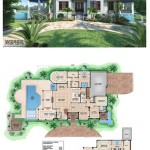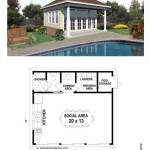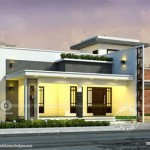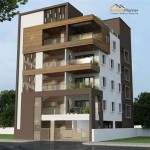Best Energy Efficient House Floor Plans for Sustainable Living
Building an energy-efficient home is becoming increasingly important for homeowners looking to reduce their environmental impact and save on energy costs. Floor plans play a crucial role in determining the energy efficiency of a home by optimizing the use of natural resources and minimizing energy consumption. Here are some essential aspects to consider when designing energy-efficient house floor plans:
Orientation and Window Placement
The orientation of the house and the placement of windows significantly impact energy efficiency. A south-facing orientation allows for maximum sunlight penetration during winter, reducing heating needs. Large windows on the south side provide natural daylight and passive solar heating, while minimizing heat loss through north-facing windows.
Thermal Envelope and Insulation
The thermal envelope refers to the building components that separate the conditioned interior from the unconditioned exterior. Proper insulation and sealing of walls, ceilings, and floors prevent heat loss in winter and heat gain in summer. High-quality insulation materials, such as cellulose or fiberglass, help maintain a stable indoor temperature and reduce energy consumption.
Zoning and Room Arrangement
Zoning refers to the grouping of rooms with similar functions together. For example, placing bedrooms on the north side and living areas on the south side maximizes natural daylight and reduces energy needed for artificial lighting and heating. Open floor plans promote air circulation and reduce temperature imbalances, while smaller rooms with lower ceilings are easier to heat and cool.
Passive Solar Design
Passive solar design utilizes natural resources to reduce energy consumption. Features such as thermal mass (materials that absorb and release heat slowly) and solar shading devices (e.g., awnings, overhangs) help regulate indoor temperatures. Thermal mass absorbs solar heat during the day and releases it at night, reducing the need for artificial heating.
Efficient HVAC Systems
Heating, ventilation, and air conditioning (HVAC) systems are responsible for a significant portion of energy consumption in homes. Energy-efficient HVAC systems, such as heat pumps, geothermal systems, and high-efficiency furnaces, provide heating and cooling while minimizing energy costs. Proper ductwork design and sealing ensure efficient air distribution.
Renewable Energy Integration
Incorporating renewable energy sources, such as solar photovoltaic (PV) panels and solar water heaters, into the floor plan can further enhance energy efficiency. Solar PV panels generate electricity from sunlight, while solar water heaters reduce the need for electricity or gas to heat water. These features not only save energy but also reduce reliance on fossil fuels.
By incorporating these essential aspects into house floor plans, homeowners can create highly energy-efficient homes that provide comfortable living spaces while minimizing energy consumption and reducing environmental impact. Energy-efficient floor plans contribute to a sustainable lifestyle and lower energy bills, making them a wise investment for the future.

Energy Efficient Home Things To Consider Perry Homes

Energy Efficient Home Design Plans Cad Pro

The Harper Offers Very Best In Energy Efficient Home Design From Green Homes Take A Look At Double House Floor Plans

Energy Efficient House Design Sustainable

Two Story House Plan With Open Great Room 33201zrx Architectural Designs Plans

Http Www Greenhomes Com Au Content Uploads Kimberley Energy Efficient Home Design Green Homes Austral House Floor Plans Best

Green Homes Energy Efficient House Plans Home Design Floor

Floor Plan Energy Efficient House Plans Passive Solar Homes

Est House Plans To Build Simple With Style Blog Eplans Com

28 Modern House Designs Floor Plans And Small Ideas








